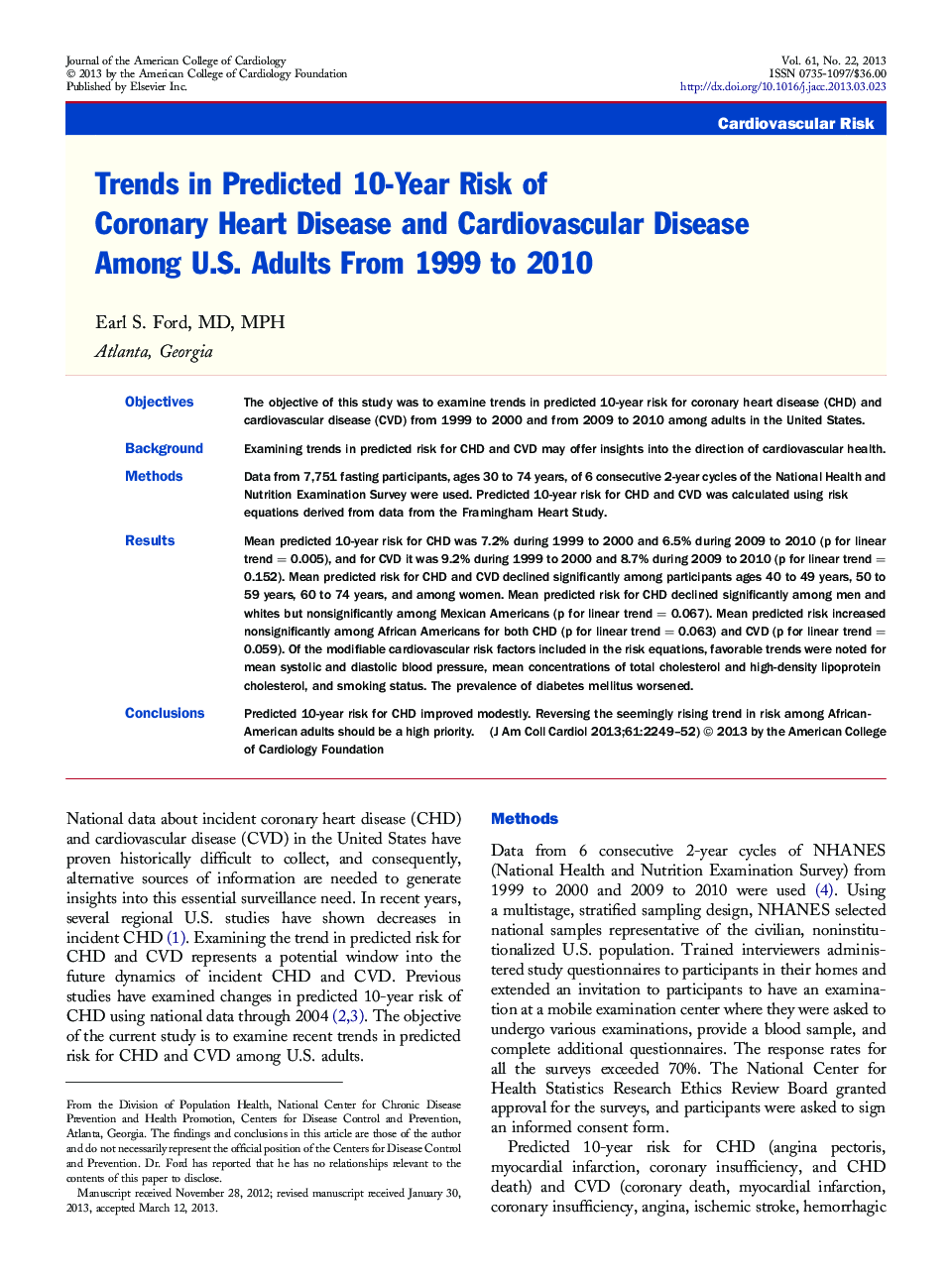| Article ID | Journal | Published Year | Pages | File Type |
|---|---|---|---|---|
| 2946019 | Journal of the American College of Cardiology | 2013 | 4 Pages |
ObjectivesThe objective of this study was to examine trends in predicted 10-year risk for coronary heart disease (CHD) and cardiovascular disease (CVD) from 1999 to 2000 and from 2009 to 2010 among adults in the United States.BackgroundExamining trends in predicted risk for CHD and CVD may offer insights into the direction of cardiovascular health.MethodsData from 7,751 fasting participants, ages 30 to 74 years, of 6 consecutive 2-year cycles of the National Health and Nutrition Examination Survey were used. Predicted 10-year risk for CHD and CVD was calculated using risk equations derived from data from the Framingham Heart Study.ResultsMean predicted 10-year risk for CHD was 7.2% during 1999 to 2000 and 6.5% during 2009 to 2010 (p for linear trend = 0.005), and for CVD it was 9.2% during 1999 to 2000 and 8.7% during 2009 to 2010 (p for linear trend = 0.152). Mean predicted risk for CHD and CVD declined significantly among participants ages 40 to 49 years, 50 to 59 years, 60 to 74 years, and among women. Mean predicted risk for CHD declined significantly among men and whites but nonsignificantly among Mexican Americans (p for linear trend = 0.067). Mean predicted risk increased nonsignificantly among African Americans for both CHD (p for linear trend = 0.063) and CVD (p for linear trend = 0.059). Of the modifiable cardiovascular risk factors included in the risk equations, favorable trends were noted for mean systolic and diastolic blood pressure, mean concentrations of total cholesterol and high-density lipoprotein cholesterol, and smoking status. The prevalence of diabetes mellitus worsened.ConclusionsPredicted 10-year risk for CHD improved modestly. Reversing the seemingly rising trend in risk among African-American adults should be a high priority.
